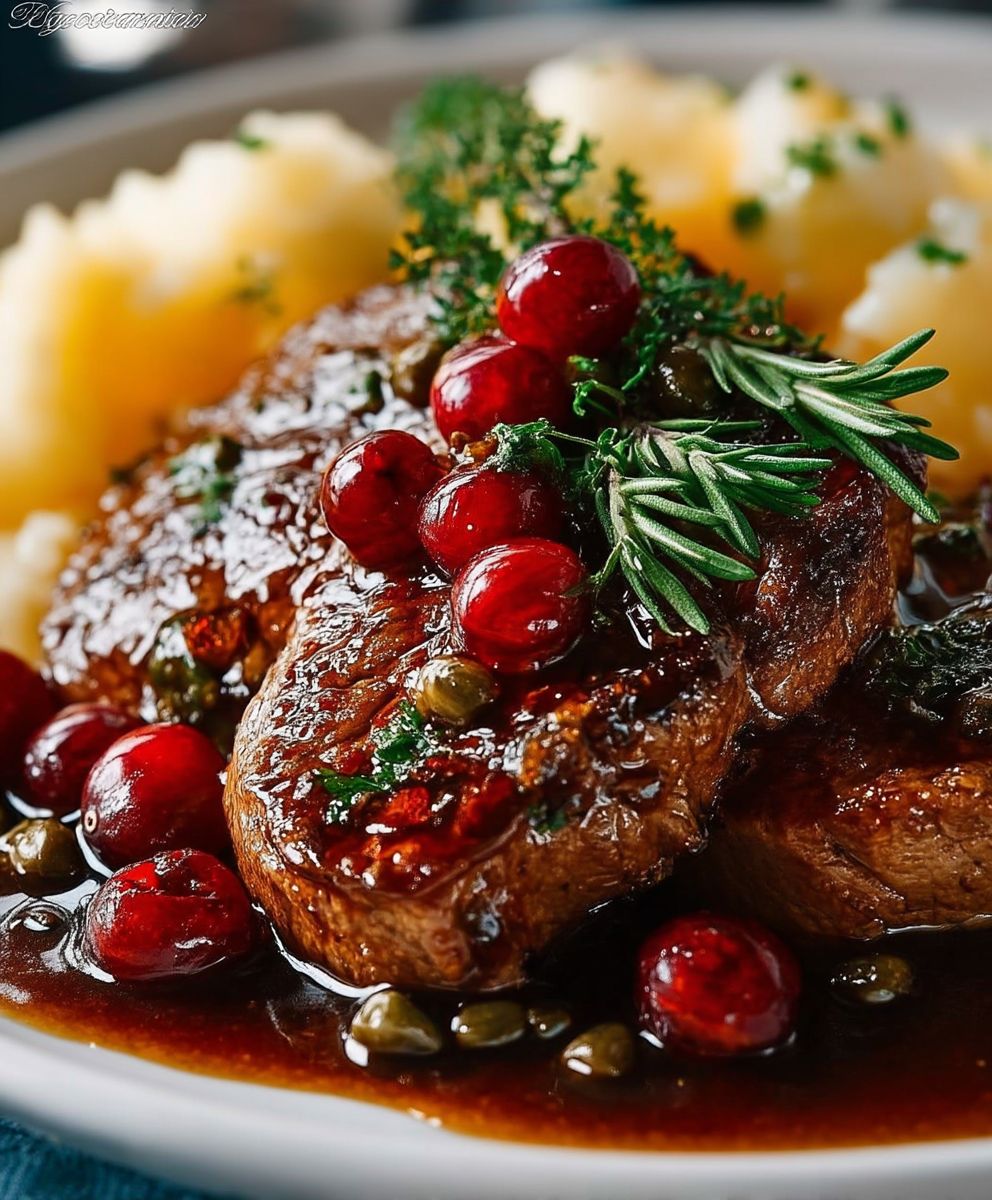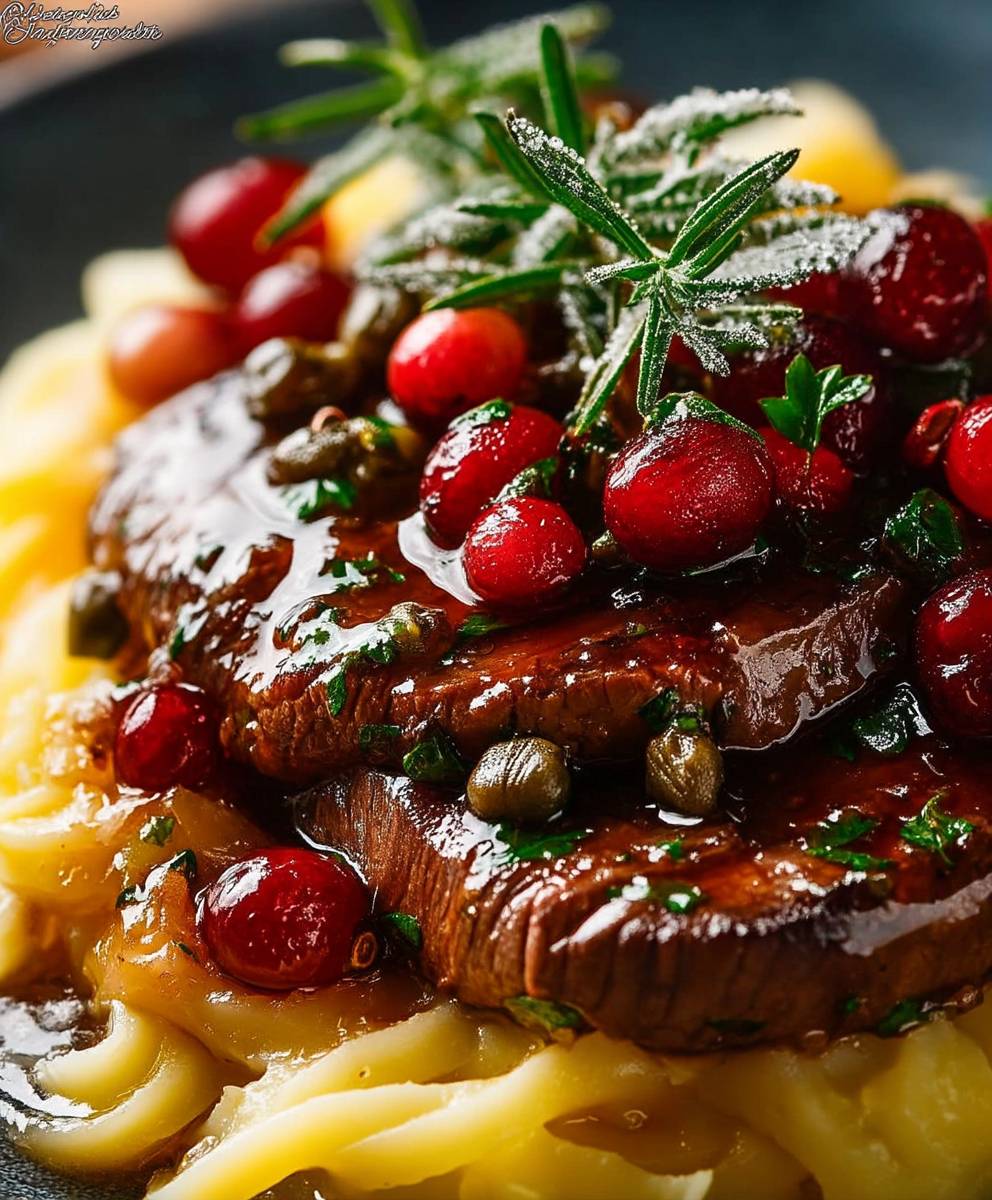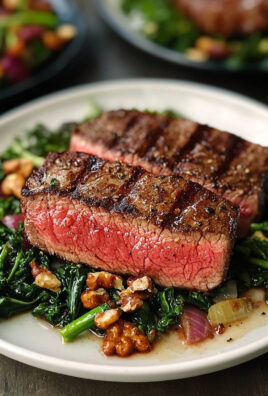Lemon Caper Sauce: Prepare to elevate your culinary creations with this vibrant and versatile sauce! Have you ever wished you could add a burst of sunshine and briny goodness to your favorite dishes? Look no further! This simple yet sophisticated sauce is the answer to your flavor prayers.
While its exact origins are debated, the combination of lemon, capers, and butter has graced tables for centuries, particularly in Mediterranean cuisine. The bright acidity of lemon beautifully complements the salty, pickled capers, creating a harmonious balance that awakens the palate. This classic pairing has been embraced by chefs and home cooks alike, becoming a staple in countless recipes.
What makes Lemon Caper Sauce so beloved? It’s the perfect marriage of flavors and textures. The tangy lemon cuts through richness, while the capers provide a delightful pop of saltiness and a subtle briny bite. Its incredible versatility is another major draw. Whether drizzled over pan-seared fish, tossed with pasta, or used as a dipping sauce for artichokes, this sauce adds a touch of elegance and zest to any meal. Plus, it’s incredibly quick and easy to make, requiring just a handful of ingredients and a few minutes of your time. Get ready to transform ordinary dishes into extraordinary culinary experiences!
Ingredients:
- 1/2 cup (1 stick) unsalted butter
- 2 tablespoons olive oil
- 4 cloves garlic, minced
- 1/4 cup dry white wine (such as Sauvignon Blanc or Pinot Grigio)
- 1/4 cup fresh lemon juice
- 2 tablespoons lemon zest
- 1/4 cup capers, drained
- 2 tablespoons chopped fresh parsley
- 1 tablespoon chopped fresh dill (optional)
- 1/2 teaspoon red pepper flakes (optional)
- Salt and freshly ground black pepper to taste
Preparing the Lemon Caper Sauce:
Alright, let’s get started on this fantastic Lemon Caper Sauce! It’s surprisingly easy to make and adds a burst of flavor to so many dishes. I love using it on fish, chicken, pasta, or even vegetables. The key is to have all your ingredients prepped and ready to go before you start cooking, as the sauce comes together quite quickly.
- Melt the Butter and Olive Oil: In a medium saucepan over medium heat, melt the butter. Once the butter is melted, add the olive oil. The combination of butter and olive oil gives the sauce a rich flavor and prevents the butter from burning. Let the mixture heat up for a few seconds until it shimmers.
- Sauté the Garlic: Add the minced garlic to the saucepan and sauté for about 30 seconds to 1 minute, or until fragrant. Be careful not to burn the garlic, as it will become bitter. Keep stirring it constantly to ensure even cooking. The aroma of the garlic at this stage is just heavenly!
- Deglaze with White Wine: Pour in the dry white wine and bring to a simmer. Let the wine simmer for about 2-3 minutes, allowing the alcohol to evaporate slightly and the wine to reduce a bit. This step adds depth and complexity to the sauce. If you don’t have white wine, you can substitute chicken broth, but the flavor will be slightly different.
- Add Lemon Juice and Zest: Stir in the fresh lemon juice and lemon zest. The lemon juice provides the bright, tangy flavor that is characteristic of this sauce, while the zest adds an extra layer of citrusy aroma and flavor. Make sure to use fresh lemon juice for the best taste. Bottled lemon juice just doesn’t compare!
- Incorporate the Capers: Add the drained capers to the sauce. Capers are brined flower buds that add a salty, briny, and slightly tangy flavor to the sauce. If you’re not a fan of capers, you can reduce the amount or omit them altogether, but I highly recommend giving them a try!
- Add Herbs and Red Pepper Flakes (Optional): Stir in the chopped fresh parsley and dill (if using). The fresh herbs add a vibrant, fresh flavor to the sauce. If you like a little heat, add the red pepper flakes. I usually add a pinch for a subtle kick, but you can adjust the amount to your liking.
- Season to Taste: Season the sauce with salt and freshly ground black pepper to taste. Be sure to taste the sauce and adjust the seasoning as needed. Remember that the capers are already salty, so you may not need to add much salt.
- Simmer and Thicken: Reduce the heat to low and let the sauce simmer for about 5-7 minutes, or until it has thickened slightly. The sauce should be able to coat the back of a spoon. If the sauce is too thin, you can simmer it for a few more minutes. If it’s too thick, you can add a little bit of water or chicken broth to thin it out.
Serving Suggestions:
Now that your Lemon Caper Sauce is ready, it’s time to put it to good use! Here are some of my favorite ways to serve it:
- Over Fish: This sauce is absolutely divine over grilled, baked, or pan-seared fish, such as salmon, cod, halibut, or tilapia. Simply drizzle the sauce over the fish just before serving.
- With Chicken: It’s also delicious with chicken! Try it over grilled chicken breasts, roasted chicken thighs, or even chicken cutlets.
- Tossed with Pasta: For a quick and easy pasta dish, toss cooked pasta with the Lemon Caper Sauce. Add some grilled shrimp or chicken for a more substantial meal.
- Over Vegetables: Drizzle the sauce over steamed or roasted vegetables, such as asparagus, broccoli, or green beans.
- As a Dip: Serve the sauce as a dip for crusty bread or vegetables.
Tips and Variations:
Here are a few tips and variations to help you customize this recipe to your liking:
- Use Fresh Ingredients: For the best flavor, use fresh lemon juice, lemon zest, and herbs.
- Adjust the Acidity: If you prefer a less tangy sauce, you can reduce the amount of lemon juice.
- Add More Heat: If you like a spicier sauce, add more red pepper flakes or a pinch of cayenne pepper.
- Use Different Herbs: Feel free to experiment with different herbs, such as oregano, thyme, or rosemary.
- Add Shallots: For a more complex flavor, add finely chopped shallots along with the garlic.
- Make it Creamy: For a creamier sauce, stir in a tablespoon or two of heavy cream at the end.
- Make it Vegan: Substitute the butter with vegan butter or olive oil.
Storing Leftovers:
If you have any leftover Lemon Caper Sauce, you can store it in an airtight container in the refrigerator for up to 3-4 days. Reheat gently on the stovetop or in the microwave before serving.
Why This Recipe Works:
This Lemon Caper Sauce recipe works because it balances the bright acidity of lemon with the richness of butter and olive oil, the saltiness of capers, and the freshness of herbs. The white wine adds depth and complexity, while the garlic provides a savory base. The simmering process allows the flavors to meld together, creating a harmonious and delicious sauce that complements a wide variety of dishes.
Troubleshooting:
- Sauce is too thin: Simmer for a longer period to reduce the liquid. You can also add a cornstarch slurry (1 teaspoon cornstarch mixed with 1 tablespoon cold water) to thicken it quickly.
- Sauce is too thick: Add a tablespoon or two of water, chicken broth, or white wine to thin it out.
- Sauce is too sour: Add a pinch of sugar or honey to balance the acidity.
- Sauce is too salty: Add a squeeze of lemon juice or a splash of water to dilute the saltiness.
- Garlic is burnt: Unfortunately, there’s no saving burnt garlic. You’ll need to start over with fresh garlic. Be sure to keep the heat low and stir frequently to prevent burning.
Nutritional Information (Approximate, per serving):
Please note that the nutritional information is an estimate and may vary depending on the specific ingredients used and portion sizes.
- Calories: Approximately 150-200
- Fat: 15-20g
- Saturated Fat: 8-12g
- Cholesterol: 30-40mg
- Sodium: 200-300mg (depending on salt added)
- Carbohydrates: 3-5g
- Fiber: 0-1g
- Sugar: 1-2g
- Protein: 0-1g
Enjoy your delicious and versatile Lemon Caper Sauce! I hope you find it as useful and flavorful as I do. Let me know in the comments how you plan to use it!

Conclusion:
This Lemon Caper Sauce isn’t just another sauce; it’s a flavor explosion waiting to happen in your kitchen. I truly believe it’s a must-try because it’s incredibly versatile, quick to make, and elevates even the simplest dishes to something truly special. The bright, zesty lemon perfectly complements the salty, briny capers, creating a harmonious balance that will tantalize your taste buds. It’s the kind of sauce that makes you want to lick the plate clean!
But don’t just take my word for it you absolutely have to experience the magic of this sauce yourself. Imagine drizzling it over perfectly pan-seared salmon, transforming it from a weeknight staple into a gourmet delight. Or picture it coating delicate scallops, adding a burst of freshness that cuts through their richness. The possibilities are truly endless!
And speaking of possibilities, let’s talk about serving suggestions and variations. While I adore this sauce with seafood, it’s equally delicious with chicken, pork, or even vegetables. Try tossing it with roasted asparagus or green beans for a vibrant side dish. For a vegetarian option, it’s fantastic with grilled halloumi cheese or served over a bed of creamy polenta.
If you’re feeling adventurous, you can easily customize the sauce to your liking. For a spicier kick, add a pinch of red pepper flakes. If you prefer a richer flavor, stir in a tablespoon of butter at the end. And for a creamier texture, a splash of heavy cream or crème fraîche will do the trick. You could even add some chopped fresh herbs like parsley, dill, or chives for an extra layer of flavor.
Here are a few more ideas to get your creative juices flowing:
- Pasta Perfection: Toss the Lemon Caper Sauce with your favorite pasta shape for a quick and easy weeknight meal. Add some grilled shrimp or chicken for extra protein.
- Egg-cellent Breakfast: Drizzle the sauce over poached eggs or an omelet for a sophisticated breakfast or brunch.
- Veggie Boost: Use it as a dressing for a simple salad of mixed greens, cherry tomatoes, and cucumbers.
- Pizza Upgrade: Spread a thin layer of the sauce on your homemade pizza crust before adding your toppings.
I’m confident that once you try this Lemon Caper Sauce, it will become a staple in your recipe repertoire. It’s the perfect way to add a touch of elegance and flavor to any meal, without spending hours in the kitchen. It’s also a fantastic way to impress your friends and family with your culinary skills!
So, what are you waiting for? Head to your kitchen, gather your ingredients, and whip up a batch of this incredible sauce. I promise you won’t be disappointed. And most importantly, I’d love to hear about your experience! Share your photos and stories on social media using [Your Hashtag] and let me know how you’re using this versatile sauce in your own cooking. I can’t wait to see what culinary creations you come up with! Happy cooking!
Lemon Caper Sauce: The Ultimate Guide to Making It Perfectly
Bright, flavorful Lemon Caper Sauce for fish, chicken, pasta, or vegetables. Easy to make with fresh ingredients for a tangy, delicious meal addition.
Ingredients
- 1/2 cup (1 stick) unsalted butter
- 2 tablespoons olive oil
- 4 cloves garlic, minced
- 1/4 cup dry white wine (such as Sauvignon Blanc or Pinot Grigio)
- 1/4 cup fresh lemon juice
- 2 tablespoons lemon zest
- 1/4 cup capers, drained
- 2 tablespoons chopped fresh parsley
- 1 tablespoon chopped fresh dill (optional)
- 1/2 teaspoon red pepper flakes (optional)
- Salt and freshly ground black pepper to taste
Instructions
- Melt the Butter and Olive Oil: In a medium saucepan over medium heat, melt the butter. Once the butter is melted, add the olive oil. Let the mixture heat up for a few seconds until it shimmers.
- Sauté the Garlic: Add the minced garlic to the saucepan and sauté for about 30 seconds to 1 minute, or until fragrant. Be careful not to burn the garlic, keep stirring it constantly to ensure even cooking.
- Deglaze with White Wine: Pour in the dry white wine and bring to a simmer. Let the wine simmer for about 2-3 minutes, allowing the alcohol to evaporate slightly and the wine to reduce a bit.
- Add Lemon Juice and Zest: Stir in the fresh lemon juice and lemon zest.
- Incorporate the Capers: Add the drained capers to the sauce.
- Add Herbs and Red Pepper Flakes (Optional): Stir in the chopped fresh parsley and dill (if using). If you like a little heat, add the red pepper flakes.
- Season to Taste: Season the sauce with salt and freshly ground black pepper to taste. Be sure to taste the sauce and adjust the seasoning as needed.
- Simmer and Thicken: Reduce the heat to low and let the sauce simmer for about 5-7 minutes, or until it has thickened slightly. The sauce should be able to coat the back of a spoon. If the sauce is too thin, you can simmer it for a few more minutes. If it’s too thick, you can add a little bit of water or chicken broth to thin it out.
Notes
- Use fresh ingredients for the best flavor.
- Adjust the acidity by reducing the amount of lemon juice if desired.
- Add more red pepper flakes or cayenne pepper for a spicier sauce.
- Experiment with different herbs like oregano, thyme, or rosemary.
- Add finely chopped shallots along with the garlic for a more complex flavor.
- Stir in a tablespoon or two of heavy cream at the end for a creamier sauce.
- Substitute the butter with vegan butter or olive oil to make it vegan.
- Sauce is too thin: Simmer for a longer period to reduce the liquid. You can also add a cornstarch slurry (1 teaspoon cornstarch mixed with 1 tablespoon cold water) to thicken it quickly.
- Sauce is too thick: Add a tablespoon or two of water, chicken broth, or white wine to thin it out.
- Sauce is too sour: Add a pinch of sugar or honey to balance the acidity.
- Sauce is too salty: Add a squeeze of lemon juice or a splash of water to dilute the saltiness.
- Garlic is burnt: Unfortunately, there’s no saving burnt garlic. You’ll need to start over with fresh garlic. Be sure to keep the heat low and stir frequently to prevent burning.






Leave a Comment